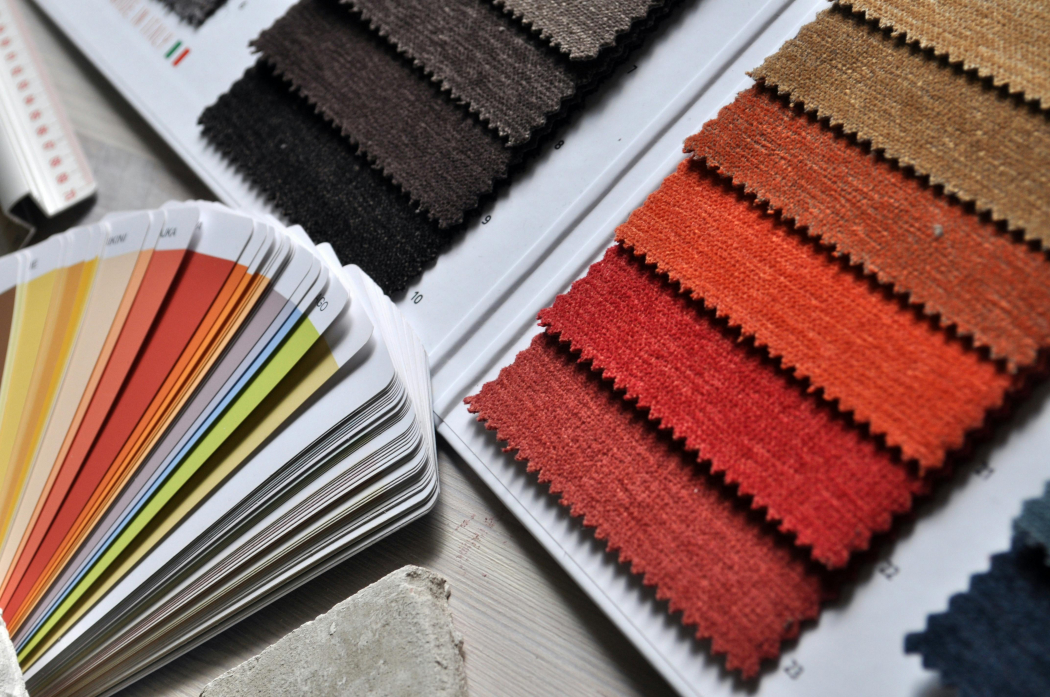Colors play a huge role in both interior design and our lives – they can not only determine the visual mood of a room, but also directly affect our emotional state, productivity and quality of rest. A correctly chosen shade can make a room feel more spacious, create peace, stimulate creativity or give the room elegance and luxury. Below we will look at the most popular colors and their impact on human feelings and the atmosphere of a room, as well as give ideas on where to use each of them most effectively.
Blue – calm, trust and confidenceBlue is one of the most powerful hues in color psychology. Deep shades, such as navy or royal blue, are associated with loyalty, confidence, calm and even luck. They create a sense of stability and are often used in spaces that require concentration or making important decisions.
Light blue tones, on the contrary, help to create a sense of peace and tranquility, so they are ideal for bedrooms, bathrooms or living rooms where you want to relax and recharge.
White – purity and a sense of spaciousness
White is often underestimated in the interior, but it is one of the most powerful in terms of visual effect. It symbolizes purity, simplicity and freshness, helps to create a calm atmosphere and relieves stress.
White is especially relevant in small spaces – it visually expands the room and makes it lighter. In addition, this tone perfectly complements accents – both glass and wood elements, as well as black details, creating balance.
Black - elegance, strength and mystery
Black is often used only as an accent, but it can also be dominant, fill the room with mystery, strength and drama. It creates a strong, sophisticated mood and always looks elegant.
However, a completely black room can feel heavy, so it is recommended to combine it with lighter and softer tones that create a more harmonious atmosphere. The result is a room that is both modern, strong and visually balanced.
Purple - creativity, nobility and fantasy
Purple is considered one of the most emotional colors. It symbolizes depth, creativity, fantasy and nobility. Light tones perfectly complement feminine interiors, but darker shades can also create a masculine, strong mood in the room.
This hue has a royal charm and luxury. Therefore, it is ideal for places where you need to create a special mood - in dressing rooms, hallways or offices.
Yellow – Joy, Energy and Optimism
In color psychology, yellow is always associated with happiness, joy and optimism. It adds vibrancy to a room, stimulates creativity and brings a feeling of sunshine even on the dullest of days.
Yellow tones are great for children’s rooms and kitchens, as well as for rooms where you want to create an energetic and bright atmosphere. However, this color should not be used excessively – it works better as an accent in furniture or decor. Golden yellow tones are especially effective in dark rooms, as they add light and a feeling of spaciousness.
Green – Balance, Renewal, Relaxation
Green is an extremely positive hue, as in color psychology it stimulates thoughts of balance, growth and renewal. It is reminiscent of nature and is great for creating a refreshing sense of nature in rooms, especially if your home is located in a city where there is little surrounding greenery.
Green in the interior, as a rule, has a relaxing effect, helping to reduce blood pressure and hypertension. Therefore, green, turquoise or mint are ideal wall colours for rooms where you want to open your mind, such as kitchens and home offices.
Gray – stability, security and restraint
Gray is a versatile and multifaceted colour that, depending on the shade, can be either soft and calm or rich and assertive. It creates a sense of security and stability, making it ideal for families with children or rooms where peace is needed.
Soft grey tones create harmony in the room, while dark matte grey wall tones create a modern and contrasting look. A grey velvet sofa or upholstered armchairs allow this colour to appear in a softer, cosier form.
Red – passion, energy and ambition
Red is one of the strongest and most emotionally charged colours. It symbolises passion, excitement, willpower and energy. Red stimulates activity and even helps to focus, making it suitable for home offices and creative spaces. However, this color should be used with caution - depending on the room and shade, it can also evoke feelings of anger and anxiety. To avoid a negative effect, it is recommended to combine red with calming, neutral tones such as beige or white.
Brown - comfort, naturalness and stability
Brown symbolizes comfort, coziness and security. It creates a homey atmosphere, which is especially good for living rooms or kitchens where family gatherings take place.
Brown also goes well with natural materials such as wood and stone, which give the room a natural and harmonious mood. This hue can be both luxurious and ruggedly masculine, depending on how it is combined with other colors and textures.
Summary
In general, warm colors like red, orange, and brown stimulate activity, passion, and energy. In turn, cool colors like green, blue, and purple have a calming effect, help to relax, and create peace. Finally, neutral colors like gray and white usually provide balance, a sense of calm, and serve as a base for accents.
Color psychology is a great help in interior design. The right colors can improve both the aesthetics of a room and your everyday well-being. When choosing shades, think about what effect you want to achieve in each room - whether it is relaxation, creativity, or energy.



